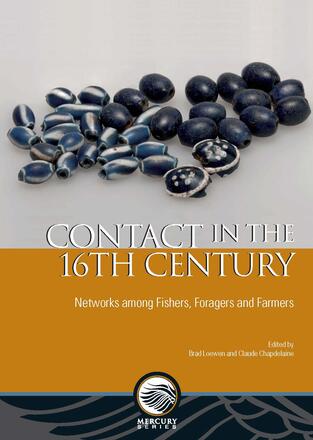
Description
From Labrador to Lake Ontario, the Gulf of Saint Lawrence to French Acadia, and Huronia-Wendaki to Tadoussac, and from one chapter to the next, this scholarly collection of archaeological findings focuses on 16th century European goods found in Native contexts and within greater networks, forming a conceptual interplay of place and mobility. The four initial chapters are set around the Gulf of Saint Lawrence where Euro-Native contact was direct and the historical record is strongest. Contact networks radiated northward into Inuit settings where European iron nails, roofing tile fragments and ceramics are found. Glass beads are scarce on Inuit sites as well as on Basque sites on the Gulf’s north shore, but they are numerous in French Acadia. Ceramics on northern Basque sites are mostly from Spain. An historical review discusses the partnership between Spanish Basques and Saint Lawrence Iroquoians c.1540-1580. The four chapters set in the Saint Lawrence valley show Tadoussac as a fork in inland networks. Saint Lawrence Iroquoians obtained glass beads around Tadoussac before 1580. Algonquin from Lac Saint-Jean began trading at Tadoussac after that. They plied a northern route that linked to Huronia-Wendaki via the Ottawa Valley and the Frontenac Uplands. Finally, four chapters set around Lake Ontario focus on contact between this region and the Saint Lawrence valley. Huron-Wendat sites around the Kawartha Lakes show an influx of Saint Lawrence trade in the 16th century, followed by an immigration wave about 1580. Huron-Wendat sites near Toronto show an unabated inflow of Native materials from the Saint Lawrence valley; however, neutral sites west of Lake Ontario show Native and European materials arriving from the south. A review of glass bead evidence presented by various authors shows trends that cut across chapters and bring new impetus to the study of beads to discover 16th-century networks among French and Basque fishers, Inuit and Algonquian foragers and Iroquoian farmers.
With contributions from Saraí Barreiro, Meghan Burchell, Claude Chapdelaine, Martin S. Cooper, Amanda Crompton, Vincent Delmas, Sergio Escribano-Ruiz, William Fox, Sarah Grant, François Guindon, Erik Langevin, Brad Loewen, Jean-François Moreau, Jean-Luc Pilon, Michel Plourde, Peter Ramsden, Lisa Rankin and Ronald F. Williamson.
Reviews
(U)n jalon important dans l’étude protohistorique nord-américaine. En demandant aux auteurs de produire un texte portant sur le contexte de contact entre les nouveaux arrivants et les populations autochtones pour différentes régions, Chapdelaine et Loewen off rent un portrait global précis, tout en considérant les limites actuelles de la connaissance archéologique sur le sujet.
- David Laroche
Ce rassemblement des connaissances de première main, acquises par ce groupe sélect d’archéologues spécialistes de la période étudiée, constitue un immense pas en avant.
- Marcel Moussette
A superb collection [...]. This is a beautifully produced volume with excellent color plates of the artifacts, color maps, and no production problems that I found. It is highly recommended for the specialist.
- Marvin T. Smith, Professor of Anthropology (retired)
Plusieurs de ces textes pourraient être lus par un lectorat qui n’est ni archéologue, ni historien, et conserver leur pertinence.
- David Laroche